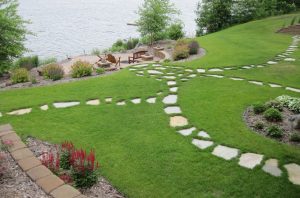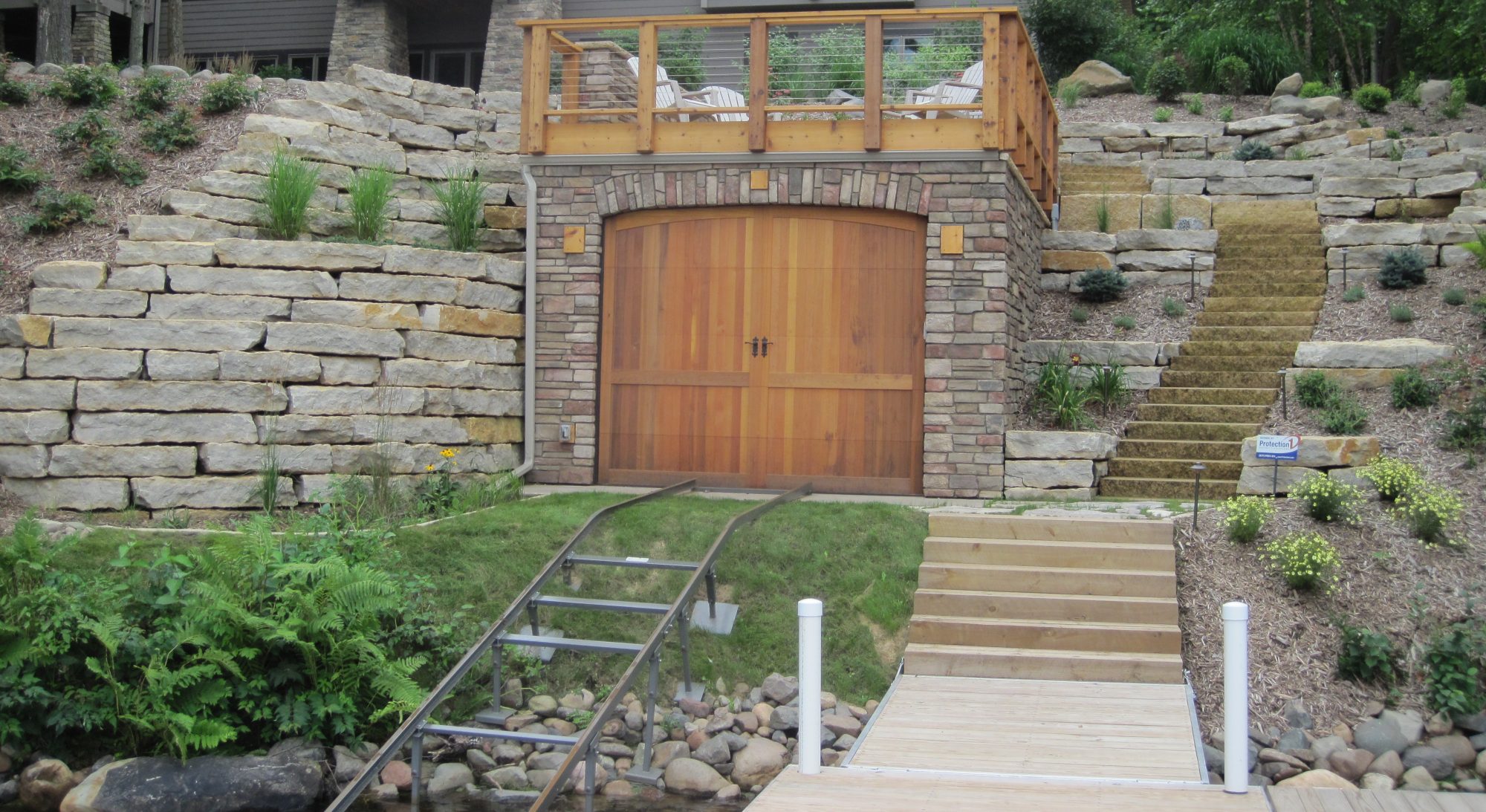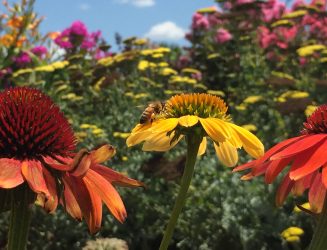
Now that we can finally see our lawns beneath the mountains of snow, it’s time to think about lawn care! Late-April to Early-May is the best time to fertilize your lawn to promote growth and the only time to apply pre-emergent Crabgrass Preventer! In this issue, learn the many ways lawns are beneficial while learning the ways you can provide early care for a healthier, grassier, greener lawn.
Healthy lawns are vital to local ecosystems and provide essential benefits to the environment. According to National Association of Landscape Professionals (NALP), just one acre of grass produces more oxygen than 1 acre of rainforest. Grassed areas are also up to 30 degrees cooler than blacktop (NALP). Healthier lawns improve larger issues such as climate change and pollution by reducing erosion, trapping carbon dioxide, cleaning the air, improving the soil, and reducing temperatures.
Here are a few tips from loveyourlandscape.org (the official consumer website for NALP) regarding early-Spring lawn care to create a healthy space for your lawn to grow:
1. Check your lawn for seasonal damage. Once winter releases its grip, get outside and inspect your lawn. Besides the snow and ice, the biggest culprits of the winter months are a group of very specialized pests and de-icing salts, all of which can damage trees, grass, and shrubs. As the weather begins to warm, it’s important to take stock of what damage has been done and develop a plan to get your yard ready for spring enjoyment.
2. De-icing salt used to clear streets and walkways can wreak havoc on grass and plants. Salt will draw moisture from the plant cells causing desiccation. If your lawn is exposed to too much salt, it can cause it to wilt and die. To restore the health of your soil, flush the salt in the soil by giving your lawn a deep watering once the weather warms. If necessary, remove the brown grass and a few inches of the damaged soil.
3. Check for brown patches in your lawn.Excessive snow, particularly areas that have been covered with large piles of shoveled snow, will kill grass. To see if your brown grass is just dormant or is dead, rake away some of the brown so that you can see the lawn surface. Check to see if there is any green tissue beginning to emerge. If so, the area will likely recover with time. If not, and other areas of the lawn are greening up, it’s time to make plans for some renovation of the areas. To repair, rake up as much of the dead tissue as you can. Adding a light topdressing of topsoil will increase your chances of success with seeding. Use a good quality grass seed that is appropriate for the area you live in. Rake the seed lightly into your new topsoil, tamp lightly with your feet. Keep the area moist, water daily if necessary, to prevent the seedlings from drying out.
4. Lingering snow can also cause snow mold, a disease that is mainly confined to the leaves of the turf. It presents as a circular pattern of grey or pink grass. The disease may go away on its own; but if it doesn’t, the affected grass should be firmly raked, top-dressed with soil, and over-seeded. Most often, only a raking is necessary to alleviate the damage.
5. Help prevent weeds before they start with Pre-Emergent! Early spring is THE ONLY TIME to apply pre-emergent Crabgrass Preventer. Crabgrass is a very hardy weed that aggressively spreads and restricts lawn growth in otherwise healthy lawns. Pre-emergents help prevent weeds from growing at the start. Think of pre-emergent control products as the equivalent to landscape fabric. They create a barrier across the surface of the soil that the seedlings of targeted weeds are unable to penetrate. Unfortunately, these controls will have no effect on perennial weeds that re-sprout from underground root systems.
6. Weeds are not just unsightly; they can indicate serious issues with your lawn. Weeds compete for space and nutrients that grass would otherwise utilize, limiting the ability for grass to provide oxygen, protect waterways and remove pollutants from the air. Weeds such as crabgrass grow in lawns that are stressed or weakened and can have a detrimental effect on the health of a lawn. A properly managed lawn is the best defense for these weeds and diseases. Healthy, well-groomed lawns leave little space for weeds. Occasional overseeding, especially in thinner lawns, also contributes to weed prevention. A persistent weed problem will require extra attention.
7. Fertilization is an important part of landscape maintenance! Proper fertilization is one of the most important things that can be done to ensure grass is healthy and strong enough to fight off threats posed by weeds, pests, and disease. With the vital role fertilizer plays in the health of your lawn, it’s important to minimize guess work and ensure the right fertilizer is applied at the right time, in the right amounts.
Our Balsam Lake Pro-Lawn experts provide a number of care lawn services to improve your lawn, landscape, and home. We will help to extend the enjoyment of your home right into the outdoors, protect your family from health concerns and even increase the value of your home. We see your lawn as outdoor living space, a playground, an investment.
Call us at 715-485-3131 for all of your lawn care needs or visit our website at www.balsamlakeprolawn.com to learn more about our services! Whether you need a spring clean-up, a lawn care assessment, or to be on a regular pre-emergent and fertilization program, our professional lawn care team is here for you!

